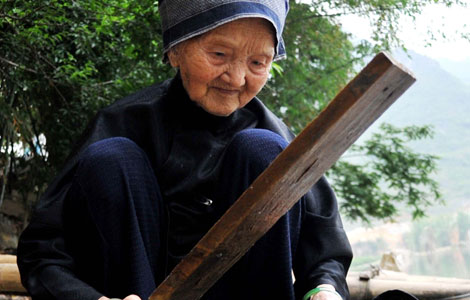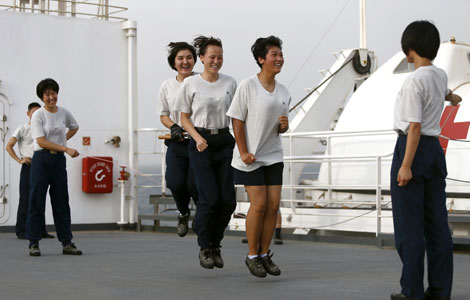Cloud seeding popular during hottest summer
Updated: 2013-09-05 01:16
By Wang Qian (China Daily)
|
|||||||||||
As most of southern China endured a severe and sometimes fatal drought this summer, cloud seeding became the most promising way to cool the country's hottest summer since 1951.
By Aug 9, the central government had allocated more than 199 million yuan ($32 million) to induce rain, particularly in Southwest and Central China, according to the Ministry of Finance.
From July 1 to 31, drought-hit regions, including Hunan and Zhejiang provinces, fired a total of 15,987 cloud-seeding artillery shells and 727 rockets, and six airplanes flew more than 10 hours of cloud-seeding missions, according to the China Meteorological Administration's Weather Modification Center.
How much rain was induced is still under assessment, said Yao Zhanyu, a senior researcher at the center.
The Hunan and Zhejiang meteorological bureaus said the cloud seeding lowered temperatures to some extent.
Not all regions hit by the drought were able to induce rain. "Cloud seeding only enhances conditions in the atmosphere to produce more rain, it doesn't create rain," Yao said.
However, local meteorological bureaus are fully prepared to resort to cloud seeding to enhance rainfall when the weather conditions are good.
The massive cloud seeding operations since late June are driving Jiangxi Xinyu Guoke Technology Co, one of the country's biggest manufacturers of the weather-modifying ordnance, to accelerate production.
Xu Keqin, the company's sales manager, told Jiangxi Daily its warehouses were empty despite operating seven days a week.
"We normally produce 1,200 shells a day for cloud seeding. Now the output is 3,000 and we still can't meet the demand," Xu said.
As of Friday, more than 800,000 square kilometers, covering 14 provinces and regions, had been affected by the drought, claiming dozens of lives due to high temperatures.
The China Meteorological Administration issued a national second-level heat alert in late July, the highest in the country's history. The alert system has four levels.
With temperatures cooling in most of the south, the National Meteorological Center downgraded its heat alert from a level two to three on Wednesday.
According to the China Meteorological Administration, from 2002 to 2011, the country has induced nearly 500 billion metric tons of rain with the rain enhancement coverage increasing by 60 percent in 2012 from that in 2002, reaching 5 million square kilometers.
Related Stories
More efforts needed to combat extreme weather: Premier 2013-08-18 07:14
China allocates cash for regions suffering extreme weather 2013-08-12 10:00
Hot weather heats up sales of swimming accessories 2013-08-06 14:33
Dry weather lingers in SW China 2013-07-31 13:36
Hot weather can't beat them 2013-07-29 20:40
Today's Top News
US Senate agrees on draft authorization on Syria
Energy partners boost
gas supplies
Police name attacker who took boy's eyes
Technology transfer is a focus
Japan urged to face history
Service PMI at 5-month high: HSBC
Abe creates boogeyman to justify buildup
'Diamond decade' ahead for China, ASEAN
Hot Topics
Lunar probe , China growth forecasts, Emission rules get tougher, China seen through 'colored lens', International board,
Editor's Picks

|

|

|

|

|

|





